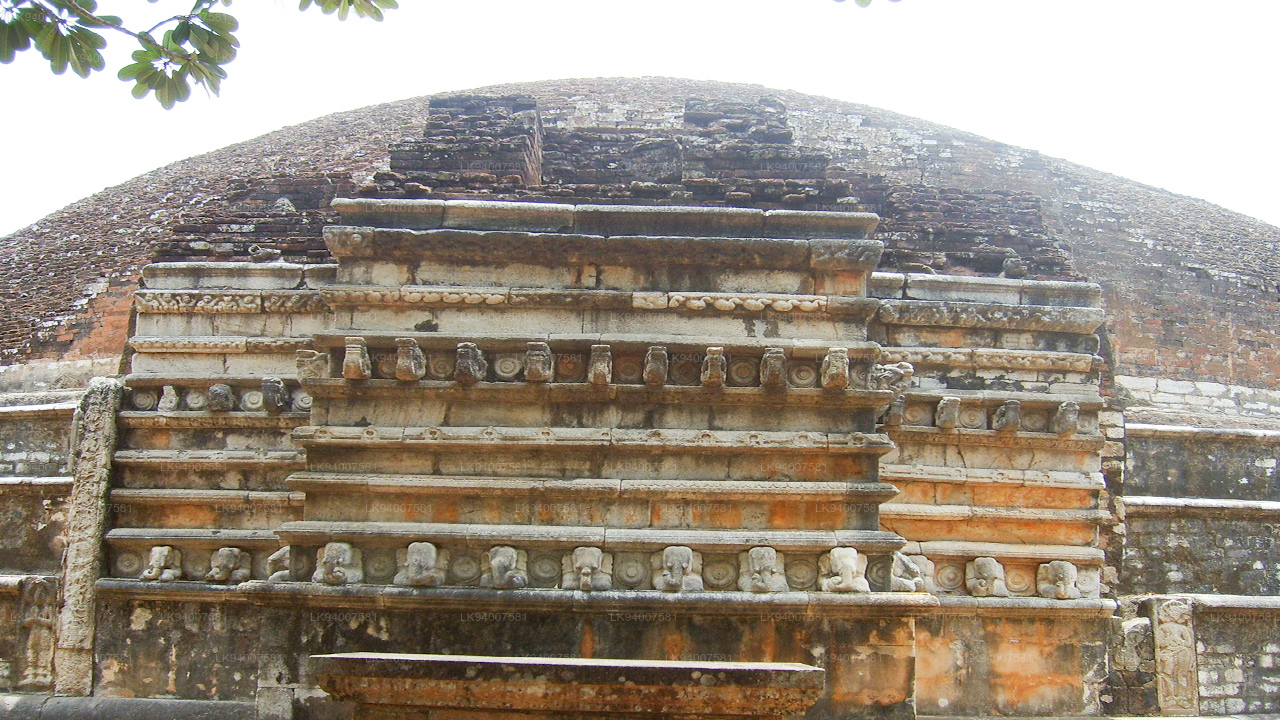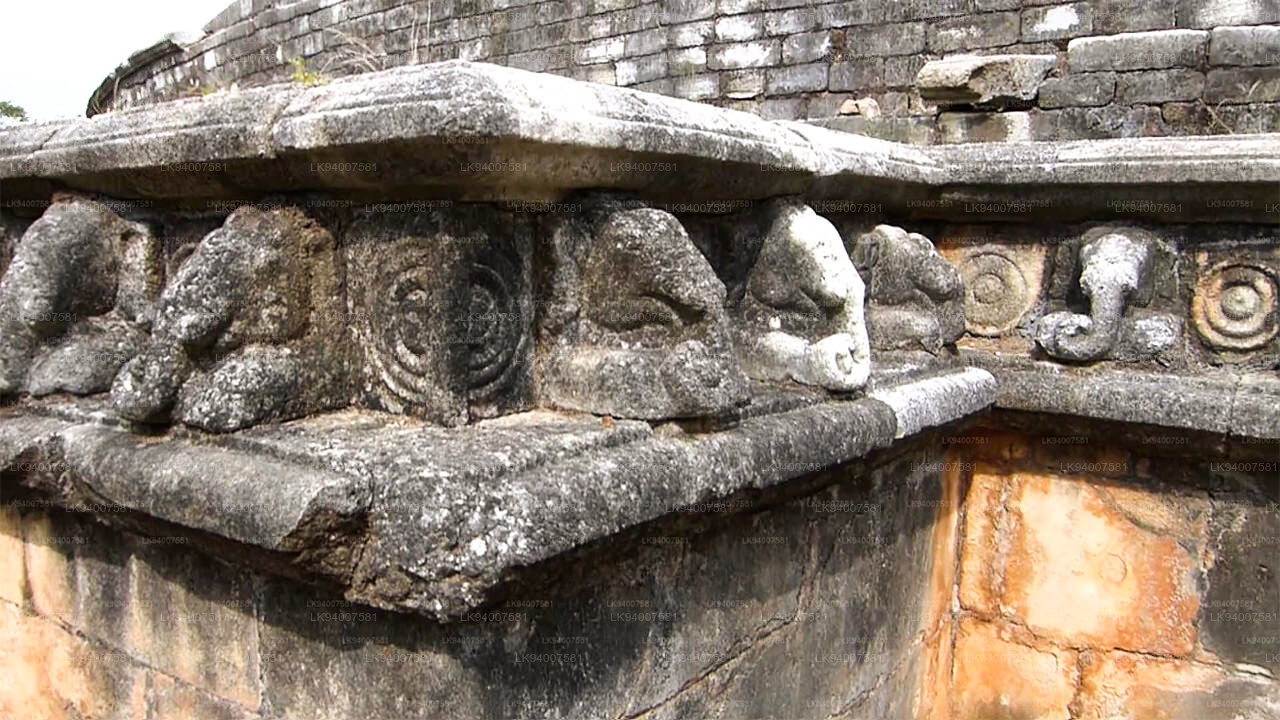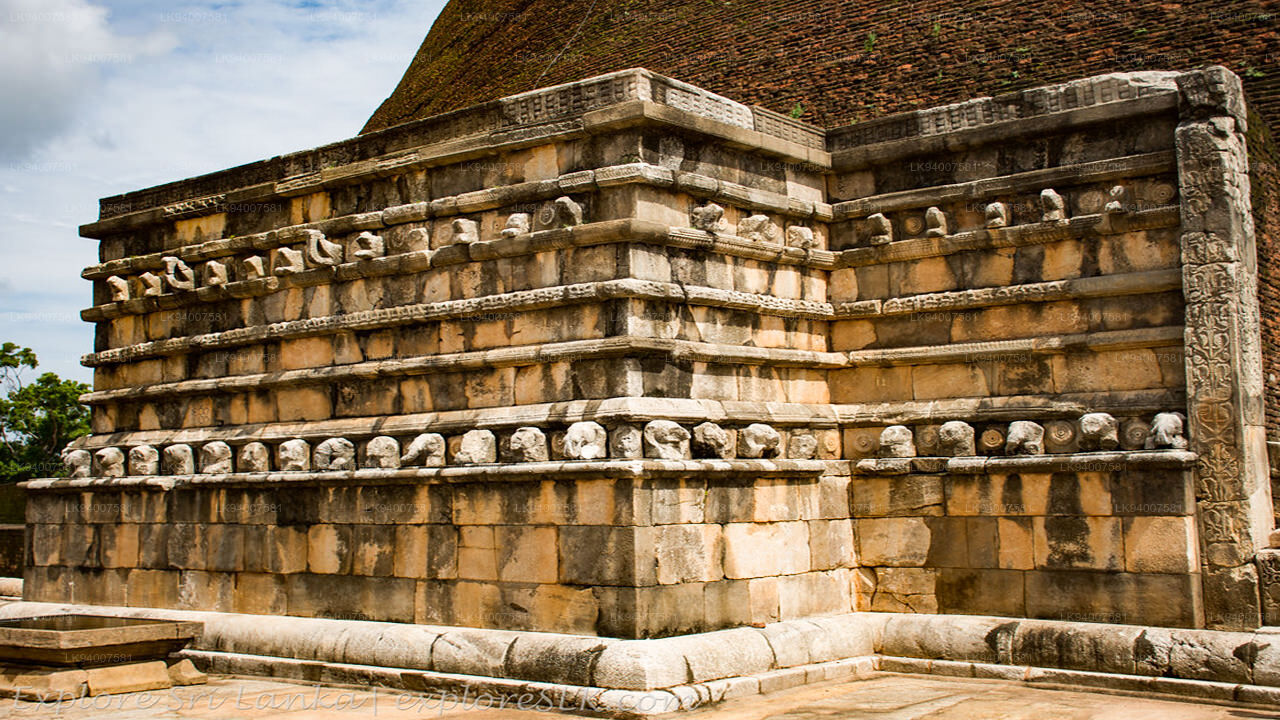
Anuradhapura City
Anuradhapura is belongs to the North Central Province in to Sri Lanka. Anuradhapura is one of the ancient capitals of Sri Lanka, famous for its well-preserved ruins of ancient Lankan civilization. The city, now a UNESCO World Heritage Site, lies 205 km north of the current capital Colombo in Sri Lanka.
Kantaka Stupa
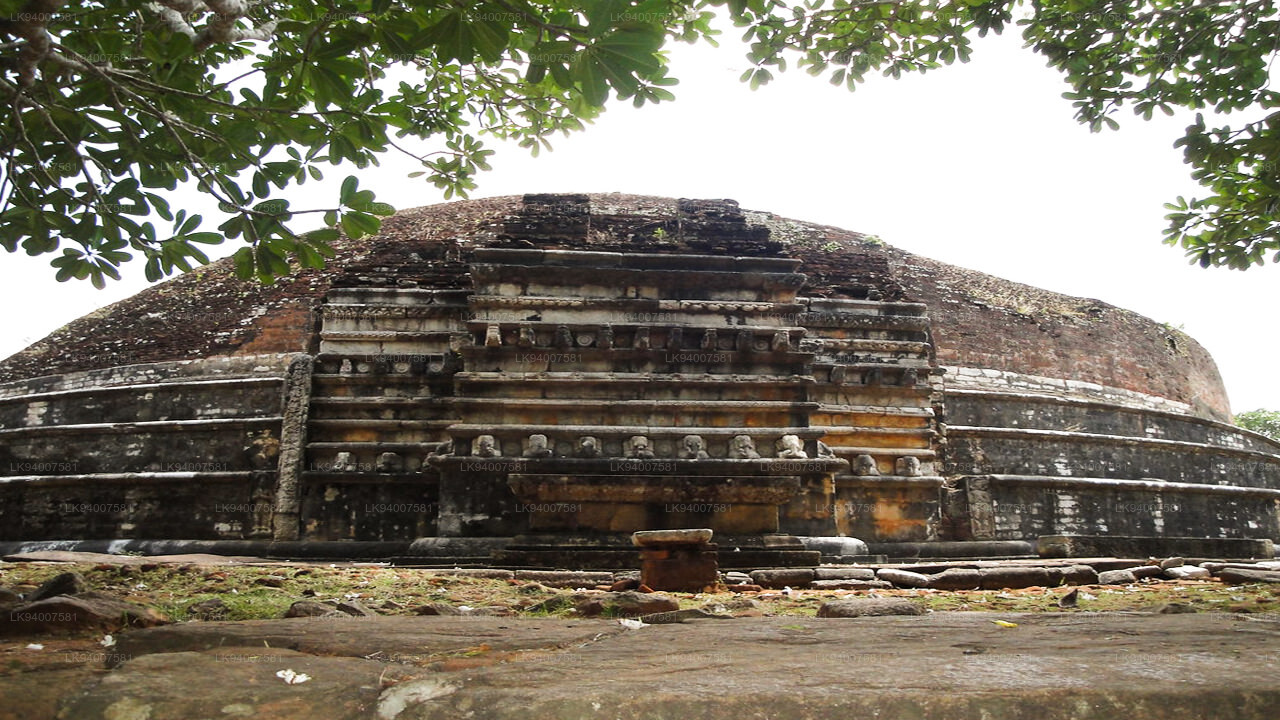
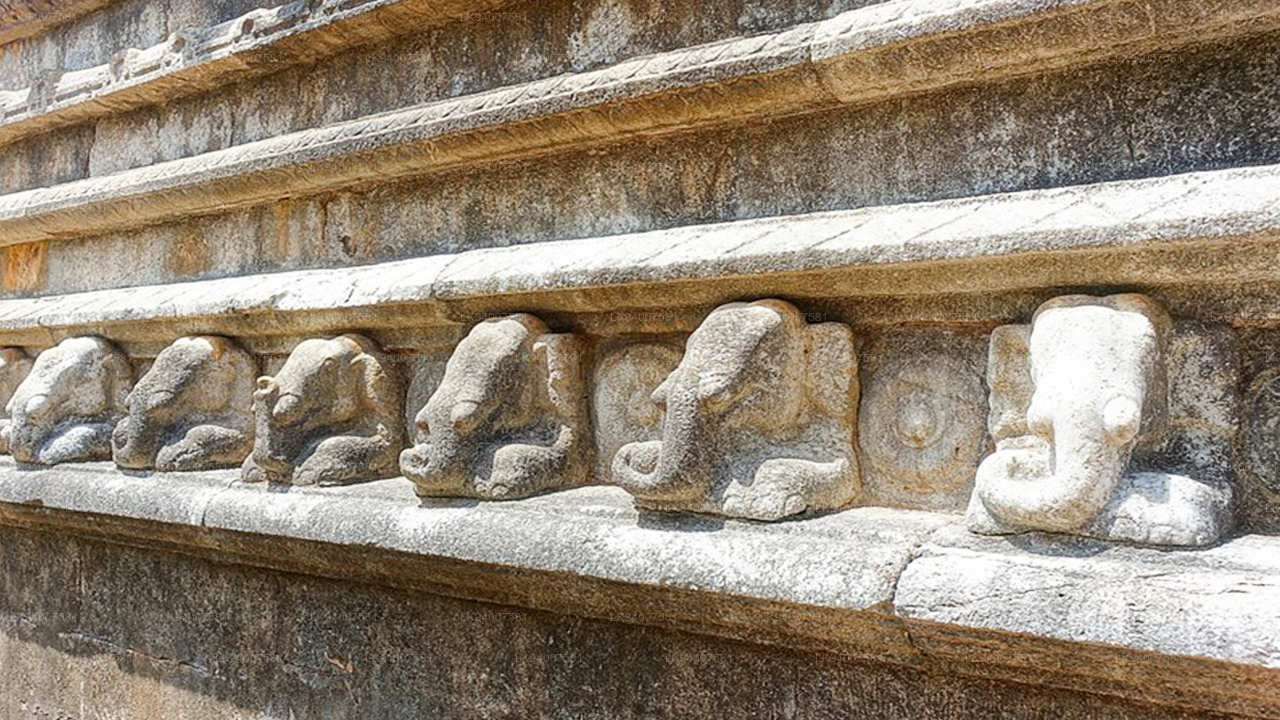
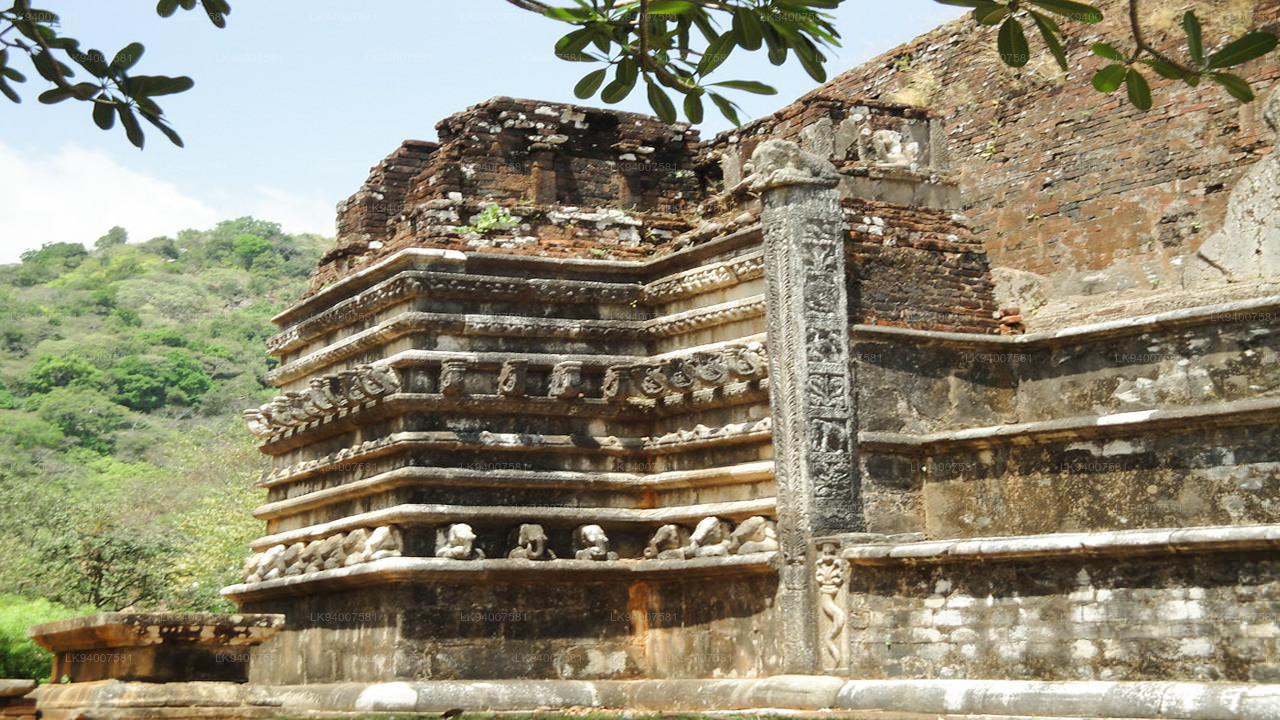
Kantaka Stupa
Kantaka Stupa ist ein kreisförmiger Stupa mit einem Grundumfang von etwa 425 Fuß. Es hat drei abgestufte Ränder. Es hat vier Frontispize in den vier Himmelsrichtungen. Das Titelbild heißt Vaahalkada. Alle Vaahalkadas sind mit Skulpturen von Zwergen, Tieren, Menschen, göttlichen Figuren und Blumenmotiven geschmückt. Eine der wichtigsten Skulpturen auf dem Kantaka Cethiya Vaahalkada ist der elefantenköpfige Gott mit zwei Armen. Die Saiviten nennen es Ganapati oder Ganeesaa. Die Ganapati-Skulpturen in den Vaahalkadas des Kantaka Cetiya haben bei Archäologen und Historikern für Verwirrung gesorgt. Niemand konnte den Zusammenhang zwischen Ganapati-Gott und Buddhismus erklären. Daher haben die singhalesischen Historiker und Archäologen versucht, eine imaginäre Interpretation zu geben.
Die vier Vahaalkadas, die den vier Himmelsrichtungen zugewandt sind, haben auf der Spitze der quadratischen Säulen verschiedene Tiere – den Elefanten im Osten, den Löwen im Norden, das Pferd im Westen und den Stier im Süden.
Die meisten indischen und srilankischen Archäologen glauben, dass zwischen diesen Tieren und den vier Himmelsrichtungen eine symbolische Beziehung besteht. Sie unterscheiden sich jedoch darin, ein bestimmtes Tier einer bestimmten Richtung zuzuordnen.
Geschichte von Kantaka Stupa
Die singhalesischen Archäologen und Historiker sagen, dass König Suratissa diese Stupa gebaut hat. Das Pesavalalu und das Frontispiz sind weitgehend erhalten. Es gibt Ruinen der Stupa, die 12 m hoch sind. Die Mönche dürften in den Höhlen in der Nähe der Stupa gewohnt haben. Da dieser Stupa von König Lajjitissa renoviert wurde. Es besteht kein Zweifel, dass es sich um das 1. Jahrhundert v. Chr. handelt
About Anuradhapura District
Anuradhapura is belongs to the North Central Province in to Sri Lanka. Anuradhapura is one of the ancient capitals of Sri Lanka, famous for its well-preserved ruins of ancient Lankan civilization. The city, now a UNESCO World Heritage Site, lies 205 km north of the current capital Colombo in Sri Lanka.
In the sacred city of Anuradhapura and in the vicinity are a large number of ruins. The ruins consist of three classes of buildings, dagobas, monastic buildings, and pokuna (ponds). The city had some of the most complex irrigation systems of the ancient world, situated in the dry zone of the country the administration built many tanks to irrigate the land. Most of the civilians are Sinhala, while Tamils and Sri Lankan Moors live in the district.
About North Central Province
North Central Province which is the largest province in the country covered 16% of total country's land area. North Central Province consist two districts called Polonnaruwa and Anuradhapure. Anuradhapura is the largest district in Sri Lanka. Its area is 7,128 km².
North Central Province has numerous potentials for Investors to start their Businesses, especially Agriculture, agro based industries and Livestock sectors. More than 65% of North Central Province's people depend on basic Agriculture and agro base industries. NCP also called "Wew Bendi Rajje" because there are more than 3,000 medium and large scale tanks situated in the province. Sri maha bodiya, Ruwanweli seya, Thuparama dageba, Abayagiri Monastry, Polonnaruwa Rankot wehera, Lankathilake are scared

